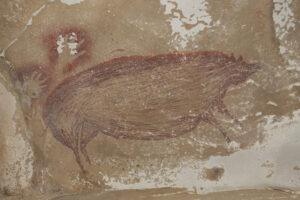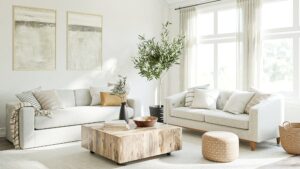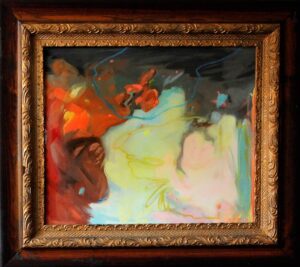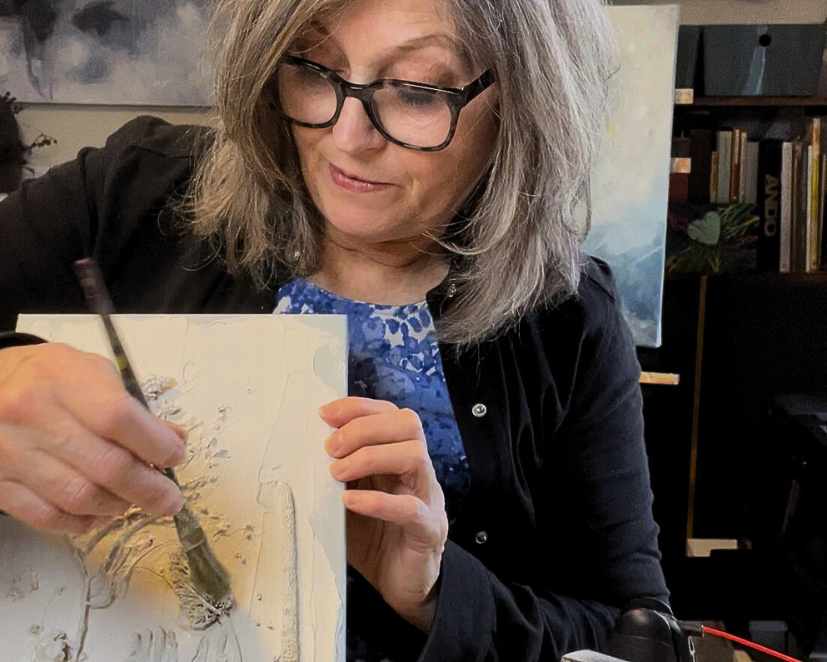When thinking about art for interior design, I am reminded of a recent conversation a friend and I had about… life. We considered the meaningful aspects that make life beautiful and bind us together: connection, love, and care for others. These have been the cornerstones of life since humans first walked the earth.
But, there is one more thing that defined the word meaning for our prehistoric people: art.
Visit Jade’s Artist Gallery for wall art.
People have engaged in displaying their art since the dawn of time. (Is the cave painting here the earliest art for interior design?)
Art has made us happy since the beginning of our species’ existence.

It is incredible that when the battle to survive would have been a daily necessity, artistic expression has been so ingrained in our early brains.
Alongside the love and care for others in their community, the need for artistic expression was literally on display. The walls of their cave homes were adorned with their art exhibits: abstract hand prints, visual stories of hunting conquests, and representations of fellow humans revered and loved.
(Image credit: Maxime Aubert, Griffith University, Nathan QLD, Australia)
So, what kind of art do modern interior designers look for?
 Interior designers look for art that will serve various purposes and be effective in different ways for their clients. Clients may not know what type of art they want, or the connection their brain wants to engage with, so an interior designer must help them determine this.
Interior designers look for art that will serve various purposes and be effective in different ways for their clients. Clients may not know what type of art they want, or the connection their brain wants to engage with, so an interior designer must help them determine this.
Through conversation with the client, and by supplying examples of existing art online, a client can start to think about how they want to engage with art, and what they might want from the art.
- If nature is essential to the client, a large waterscape or landscape is perfect for the main living space. It will remind them of their connection to the world. The piece is often representational or semi-abstract to suit the feel of the newly designed and styled interior.
- Some people love art pieces whose messages are less obvious, abstract, minimalist, or quite colourful. They are attracted to abstract thoughts, just like our early artist whose cave painting is depicted above.
- The desire to feel happiness is strong, too, when it comes to choosing art; pleasant brush strokes in happy colours enliven rooms in just the right way.
The importance of art for interior design.
The earliest artists from prehistoric times (read more here) were capable of abstract thought and were aware of the importance of art in their culture. Today, we love art to be in our homes and the places we inhabit. It has been proven over and over it makes us healthier emotionally. Given that it was within the very DNA of our oldest Homo sapiens, it should be no surprise that art’s richness is something that all of us are connected to.
Subconsciously, do we need art in our brains?

An article by Hamilton’s Sally McKay for CanadianArt magazine recounts the results of a neuroscientific experiment regarding art and its effect on brain activity.
According to researchers in a lab setting with individuals, when a subject experienced a beautiful image (established by each of the subjects individually), it was determined the beautiful image caused people, in turn, to “draw on their own life experiences to find beauty in some of the images” In other words, the beautiful image spurred them to pull thoughts of pleasure out of their brains to attribute that dopamine release to the art. Crazy. So, we have the ability to transfer thoughts of happiness (already in our brains) to a beautiful image.
Does that mean we need art?
The article suggests that it seems to make our brains curious and engaged, and that is excellent for our brains.
How it makes us happier, more alert, and more curious.
Art can, for example, be mystifying, which in turn causes our brain to return to it to figure it out, resulting in a dopamine (happiness/curiosity-causing) release.
We are all a result of our lived experiences and social conditions, which inform our art choices.
Indeed, a prominent art piece chosen by interior designers may have a colour palette that connects it to the home’s interior. It allows a large backdrop of colour that may extend a feeling of relaxation for many rooms, a direct result of the perceived stressful times we live in.
However, there is also an argument for providing clients with art that intentionally engages curiosity, thereby causing a client to be more self-aware. Because as self-awareness increases, so do higher decision-making abilities. And those skills feel like an excellent response to stress.
In conclusion, it may be perfect to offer a mix of art pieces, and it may just result in a future art collector.
Citations:
McDermott, A. (2021). What was the first “art”? How would we know? Proceedings of the National Academy of Sciences, 118(44), e2117561118. https://doi.org/10.1073/pnas.2117561118


